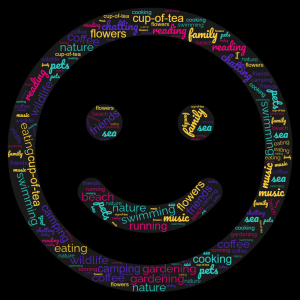 I dreamed…
I dreamed…
Falling, falling, falling, my body stiffens waiting for impact and certain death, but I jerk awake and relief, I’m alive. Finding this dream hard to recover from, I’m shaken, though it’s still early, I decide to get up.
Not all of us remember our dreams and even if we do they are probably forgotten soon after we wake. Therefore, I resolved to create a dream diary for a couple of weeks, but it has also created lots of questions.
Why do we dream? Can meaning be placed on these dreams to understand our emotions in waking life and can we analyse them ourselves?
Why do we dream?
Michelle Drerup, PsyD, DBSM who is a behavioural sleep medicine expert admits this is difficult to answer. However, she does give one plausible explanation. We dream to consolidate and analyse memories, the dreams almost serve as a ‘rehearsal’ for various situations and challenges that we face in daily life.
According to Drerup most dreaming occurs during REM (rapid eye movement) sleep, which we enter periodically throughout the night. Various studies on sleep show that our brainwaves are almost as active during REM cycles as they are when we are awake. According to experts the brainstem generates REM sleep and the forebrain generates dreams.
There is still more to learn about the psychology behind dreams, one study concluded that dreams stem from the imagination https://www.ncbi.nlm.nih.gov/pmc/articles/PMC2814941/ featuring memories, abstract thoughts and wishes bedded deep within the brain. The study concludes
“Viewing dreams as a powerful form of imagination can help explain many of their unique features, such as sudden transitions, uncertainty about people and places, poor subsequent recall, disconnection from the environment, and offers testable predictions for future studies”.
Experts also know that people with Post Traumatic Stress Disorder are prone to nightmares because they recur around the traumatic experience. However, more research is needed as many people without PTSD also experience such upsetting dreams we would describe as nightmares. Nevertheless, very often frightening dreams such as being chased or other scary situations are common when we are experiencing a period of stress or anxiety.
My strange Dream
Myself and other women whom I don’t know, are taking part in a game, maybe a game show. We had to enter a wardrobe, densely packed with thick coats and the winner is the first one to find their way out. There is added pressure as someone else will enter after a period of time to chase us down and if they find us, our game is over. I keep parting the coats stepping through only to find more densely packed coats. I force them apart and step between them, but still more densely packed coats. The atmosphere is warm and stuffy and I am beginning to panic. As the feeling begins to well inside me – I wake up.
Why are dreams so strange?
Drerup writes for the Cleveland Clinic “This may be to do with neurotransmitters, or brain chemicals. During REM sleep, some are more pronounced while others are suppressed.
Acetylcholine (which maintains brain activation) is more prominent, as is dopamine (which some researchers link to hallucinations).” The dopamine may be the reason why dreams are often surreal.
What do dreams mean?
This, according to Drerup, is yet another mystery, particularly as we can’t remember our dreams or can’t remember them accurately. There have been psychologists who have placed weight on the meaning of dreams, most notably Sigmund Freud and Carl Jung. “Freud thought dreams are repressed content, ideas or themes. Jung developed this theory calling it a ‘collective unconscious’. It’s something that you’re carrying from your ancestors.”
If you google dream interpretation on the internet there is a plethora of interpretations about what your dream may mean.
Fire
I dreamed of fire. I am back at school and a fire has broken out. We have been taught the procedure and where to go to safety, but I can’t remember it and I am alone. Some parts of the school I recognise but mostly this constructed school in my dream is unrecognisable. I have made a mistake and heading towards the flames. I have to turn back but the flames are close. This time I have made the right decision and find the school marshals directing students away from the blaze. Relief floods over me and a friend helps as I’m breathless, from the shock, relief and anxiety.
It seems to depend upon the context, what happens and has various interpretations, some of them conflicting. For example, according to one source, dreaming of fire can mean destruction or re-birth, it could be anger or passion.
Dreams about falling
I started with a dream about falling. However, if you experience this, according to Healthline, it may have little to do with your mind trying to interpret something and more to do with a hypnic jerk. This is something that affects 60 – 70 percent of people according to the article and certainly one I experience. Hypnic jerk is a sudden, involuntary muscle contraction which usually occurs as you fall asleep.
Sometimes, according to the article, there is an overlap between the hypnic jerk and the dream about falling. However, like other nightmares or horrible dreams they could be related to stress and the tips and techniques we for good sleep hygiene, a winding down routine and not using electronic devices can help here too. Of course we all have stressful periods and our dreams may reflect this.
Reflect on your own life
What most of the experts seem to agree on is that there isn’t a one case fits all for interpreting your dreams, we are all unique, with different personalities and life experiences and thus it is agreed that you should interpret dreams by what they mean to you.
Please remember if you are having trouble sleeping or frequent nightmares and struggling to deal with stress and anxiety, it is important to see your GP.
References
https://www.healthline.com/health/hypnagogia#effects


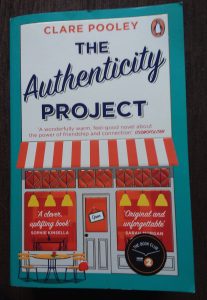

 Matt Haig is the number one best seller and has written many books including ‘The Midnight Library’, ‘Reasons to Stay Alive’ and ‘Notes on a Nervous Planet’. In his early twenties Matt suffered a nervous breakdown. This book includes some of his reflections, messages of hope and wisdom he learnt in his darkest moments.
Matt Haig is the number one best seller and has written many books including ‘The Midnight Library’, ‘Reasons to Stay Alive’ and ‘Notes on a Nervous Planet’. In his early twenties Matt suffered a nervous breakdown. This book includes some of his reflections, messages of hope and wisdom he learnt in his darkest moments.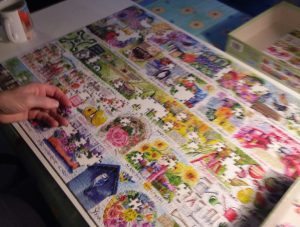 Jigsaw Puzzles
Jigsaw Puzzles If you are missing gardening as I am, there is an indoor solution tending to house plants. The benefits of nature have been shown to be positive even by looking at or tending to indoor plants. There are also a number of gardening tasks to undertake with indoor plants including watering or spraying and dead-heading leaves or flowers. (It is, of course, important to check the label on how to care for your indoor garden).
If you are missing gardening as I am, there is an indoor solution tending to house plants. The benefits of nature have been shown to be positive even by looking at or tending to indoor plants. There are also a number of gardening tasks to undertake with indoor plants including watering or spraying and dead-heading leaves or flowers. (It is, of course, important to check the label on how to care for your indoor garden).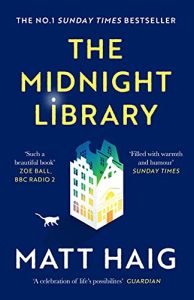

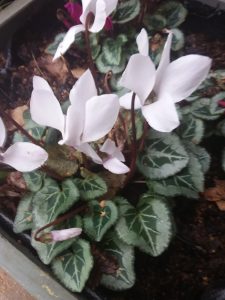 rking from home and want to keep yourself motivated and have creative ideas, you may wear or have décor in a colour which you associate with interest. According to the study you would use green, blue, purple but for me it would be orange and Dad turquoise. Adding house plants with green foliage or colourful flowers could have multiple benefits for your mental health. Orchids for example have a variety of coloured flowers. Others you may choose include white Poinsettia, African Violets, Kalanchoe or purple or white Cyclamen.
rking from home and want to keep yourself motivated and have creative ideas, you may wear or have décor in a colour which you associate with interest. According to the study you would use green, blue, purple but for me it would be orange and Dad turquoise. Adding house plants with green foliage or colourful flowers could have multiple benefits for your mental health. Orchids for example have a variety of coloured flowers. Others you may choose include white Poinsettia, African Violets, Kalanchoe or purple or white Cyclamen.
 Café’s’ in 2017. At these meetings, people check-in with their feelings in terms of describing them like a weather forecast. This should be easier, we are often pre-occupied with the weather. Especially if we are going to be outside during the day or evening.
Café’s’ in 2017. At these meetings, people check-in with their feelings in terms of describing them like a weather forecast. This should be easier, we are often pre-occupied with the weather. Especially if we are going to be outside during the day or evening.